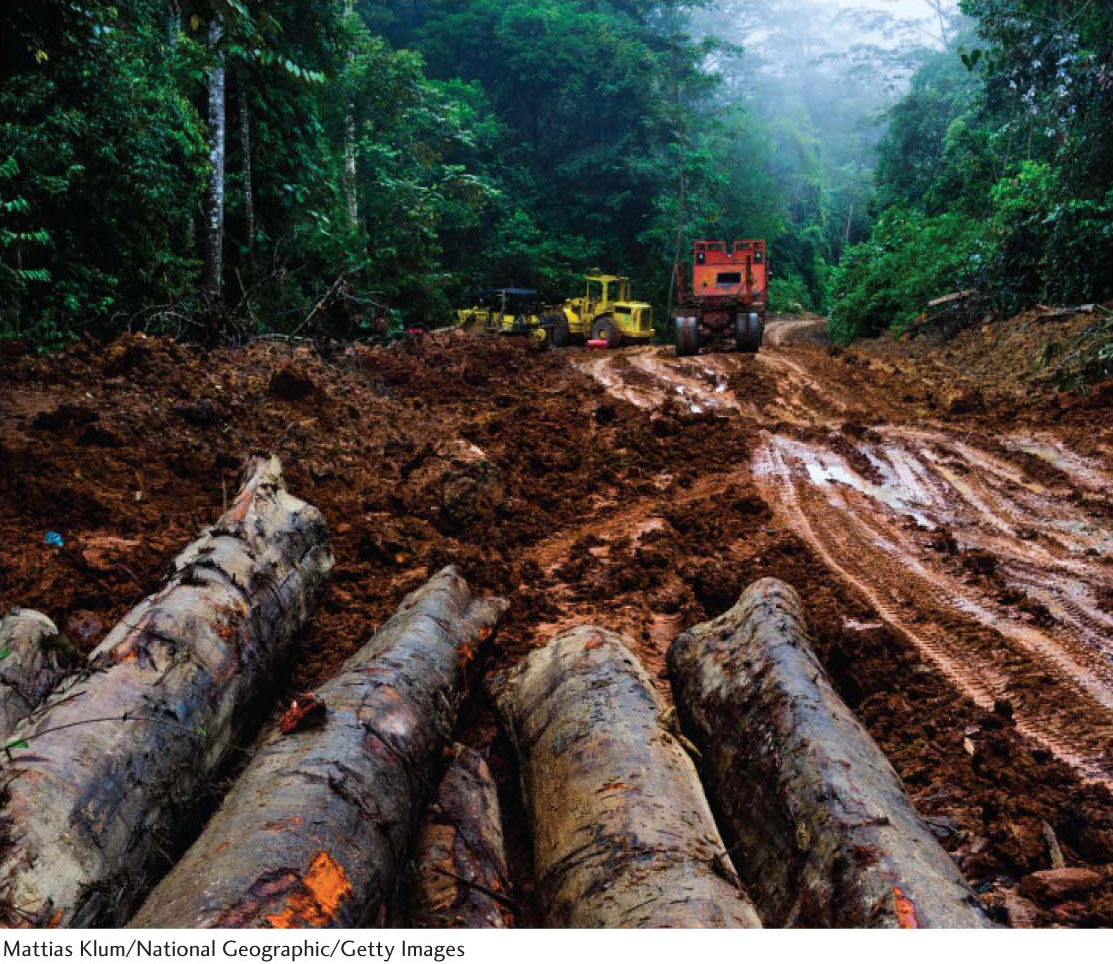The Light Reactions of Photosynthesis and the Calvin Cycle
405


In Chapter 2, we discussed Brownian motion, the movement of molecules due to background thermal energy. The speed of Brownian motion is proportional to the temperature, a measure of the background thermal energy. The temperature in the sun is approximately 15 million degrees Celsius. At this temperature, Brownian motion is so powerful that the collision of two hydrogen atoms results in the formation of a helium atom and the release of energy:

An almost unfathomable amount of energy is released from the sun at a given instant. The majority of this energy will simply pass into outer space, forever useless, a dramatic example of the inevitability of entropy. However, Earth is immersed in this celestial glow as it makes its yearly journey about the sun. The sun’s energy is in the form of broad-
On our planet are organisms capable of collecting the electromagnetic energy of the visible spectrum and converting it into chemical energy. Green plants are the most obvious of these organisms, though 60% of this conversion is carried out by algae and bacteria. This transformation is perhaps the most important of all of the energy transformations that we will see in our study of biochemistry; without it, life on our planet as we know it simply could not exist. If plants stopped converting light energy into chemical energy, all higher forms of life would be extinct in about 25 years.
406
The process of converting light energy into chemical energy is called photosynthesis, which uses the energy of the sun to convert carbon dioxide and water into carbohydrates and oxygen. These carbohydrates not only provide the energy to run the biological world, but also provide the carbon molecules to make a wide array of biomolecules. Photosynthetic organisms are called autotrophs (literally, “self-
Photosynthesis is composed of two parts: the light reactions and the dark reactions. The light reactions transform light energy into two forms of biochemical energy with which we are already familiar: reducing power and ATP. The dark reactions then use the products of the light reactions to drive the reduction of CO2 and its conversion into glucose and other sugars. The dark reactions are also called the Calvin cycle or light-
Just as cellular respiration takes place in mitochondria, photosynthesis takes place in specialized organelles called chloroplasts. We will examine the chloroplast and then proceed to the light reactions of photosynthesis. Many of the biochemical principles that apply to oxidative phosphorylation also apply to photosynthesis. Finally, we will examine the Calvin cycle to learn how the products of the light reactions are used to synthesize glucose.
✓ By the end of this section, you should be able to:
✓ 1 Describe the light reactions.
✓ 2 Identify the key products of the light reactions.
✓ 3 Explain how redox balance is maintained during the light reactions.
✓ 4 Explain the function of the Calvin cycle.
✓ 5 Describe how the light reactions and the Calvin cycle are coordinated.